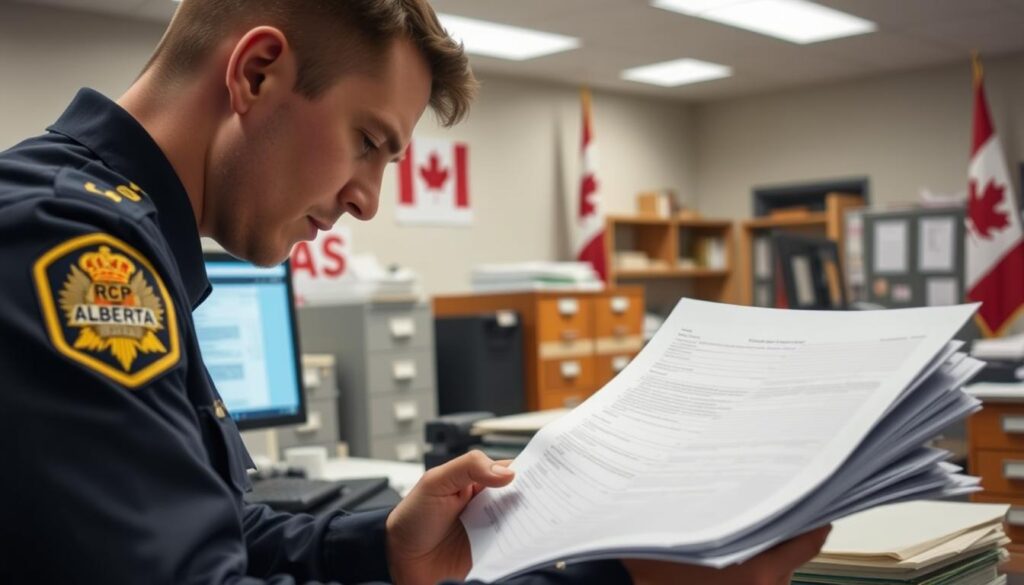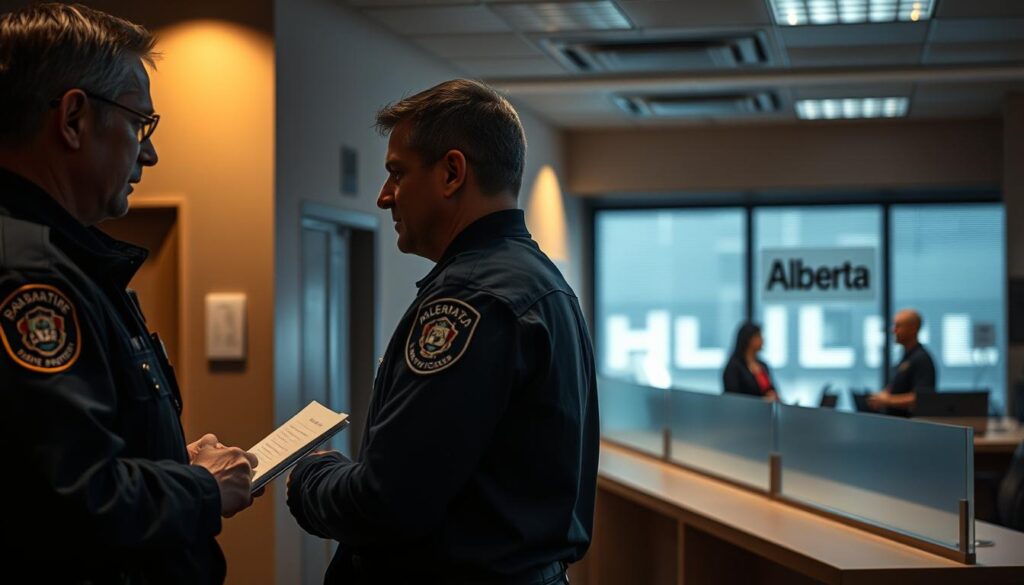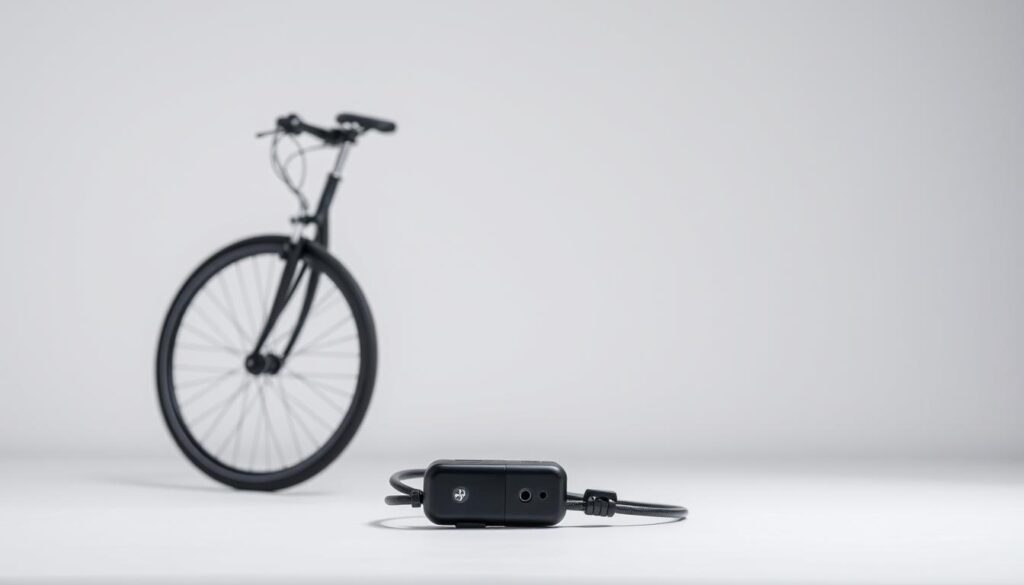Over 60% of background checks in Canada require official documentation that many don’t realize exists. Whether you’re applying for a job, settling insurance claims, or addressing legal matters, understanding how to access critical records is essential. These documents often serve as the backbone of important decisions, yet navigating the system can feel overwhelming without clear guidance.
In Alberta, the process involves specific steps that differ from other provinces. For instance, the RCMP does not accept crime reports via email or social media—a detail that catches many off guard. If you’re outside Canada, local authorities must coordinate with Canadian agencies directly, adding layers to the procedure.
Knowing which type of record you need saves time. Some situations demand detailed incident summaries, while others require basic verification. Fees and processing times vary, so gathering your identification and case details beforehand ensures smoother interactions. This preparation helps avoid delays, especially when deadlines loom.
Crime checks here follow standardized protocols nationwide, but regional nuances matter. Non-emergency requests often involve online portals, whereas urgent cases need immediate in-person action. Recognizing these distinctions empowers you to act confidently, whether you’re updating personal records or supporting legal proceedings.
Introduction to Crime Checks in Canada
Navigating Canada’s crime check system requires understanding how data flows between communities and law enforcement. This process impacts everything from job opportunities to neighborhood safety plans. Let’s explore how these checks work and why precision matters at every step.

How the System Operates Nationwide
Crime checks follow consistent rules across provinces. Different types of incidents need specific documentation. For example, minor thefts might require basic forms, while assault cases demand detailed witness statements.
Non-emergency requests often start online or through local administration lines. Contact details for regional offices are available through official channels like rcmp-grc.gc.ca. This ensures your information reaches the right team quickly.
Why Details Make All the Difference
Accurate records shape safety strategies and court decisions. When you provide clear details about crimes, you help authorities spot patterns. This leads to better patrol routes or updated prevention programs in your area.
Errors in reports can delay background verifications for jobs or visas. Double-check dates, locations, and descriptions before submitting. Your attention to detail strengthens community safety while protecting your own interests.
Steps to Obtain Your Alberta Police Report
Securing critical documents efficiently requires knowing exactly what authorities need upfront. With 72% of applications delayed due to incomplete submissions, proper preparation becomes your greatest asset. Start by confirming which document type aligns with your needs—background checks and incident summaries follow different protocols.
Gathering Necessary Information and Documents
Begin with your full legal name, date of birth, and current address. Valid government-issued ID like a driver’s license or passport is mandatory. If requesting details about a specific event, locate case numbers or file references beforehand.

Some requests require extra steps. Fingerprints or photographs might be needed for employment-related checks. Keep this in mind when planning your timeline.
| Document Type | Required Items | Average Processing Time |
|---|---|---|
| Background Check | ID, Fingerprints | 5-7 business days |
| Incident Summary | Case Number, ID | 3-5 business days |
Your Role in the Application Process
Accuracy determines success. Double-check every field before submitting through online portals, mail, or in-person visits. Fees range from $25-$75 depending on complexity—confirm payment methods with your local detachment.
“Applicants who organize their materials upfront reduce processing time by 40%,” notes an RCMP records coordinator.
Follow up through official channels if delays occur. The administration line at your nearest detachment provides status updates. Respond promptly if they request additional information—delays often stem from unresolved inquiries.
How to Report Crime in Progress and Non-Emergencies
Knowing when and how to report incidents ensures swift action while keeping emergency lines available for critical needs. Clear protocols exist for different scenarios—understanding them protects both public safety and your interests.

Emergency Situations: Immediate Action Required
Call 911 immediately for life-threatening risks like assaults, fires, or active crimes. Dispatchers prioritize calls based on urgency, so describe the situation calmly. Provide exact locations and suspect details if safe to share.
Never use email or social media for emergencies. Alberta RCMP detachments route urgent requests through 911 operators. This system ensures first responders reach you faster.
Handling Non-Urgent Matters Effectively
For thefts without suspects or minor property damage, use online portals or local detachment lines. The police service of jurisdiction determines which platform to use—check their website first.
Examples of non-emergency reports include:
- Vandalism discovered hours later
- Lost items worth under $5,000
- Noise complaints after the event
Submit accurate descriptions with timestamps. Incomplete forms delay processing. One officer notes: “Mistakes in license plate numbers or addresses add days to investigations.”
Additional Reporting Resources and Online Tools
Modern crime prevention relies on community-driven tools that empower individuals to protect their property proactively. One standout initiative combines technology with collaborative partnerships to tackle a common urban issue—bicycle theft.

Utilising Bike Index for Stolen Bicycle Reporting
Registering your bike takes minutes but creates lasting protection. The free service requires basic information like serial numbers, model details, and photos. Over 240,000 registrations show how communities value this proactive approach.
| Feature | Benefit | Impact |
|---|---|---|
| Free Registration | Instant theft deterrent | 800+ partner organizations |
| Stolen Bike Alerts | Rapid community response | $8M+ recovered |
| Retailer Partnerships | On-site registration | Faster ownership verification |
If your bike gets stolen, mark it as missing through your account. This triggers alerts across law enforcement networks in Canada and the U.S. Never confront sellers—gather evidence and contact authorities instead.
“One registered bike led to recovering 12 others in a trafficking ring,” shares a Banff community safety coordinator.
This system transforms how theft reporting works. By sharing information efficiently, it helps return items faster while building prevention strategies. Local shops now integrate registrations during purchases, making protection effortless from day one.
Police Services for Vehicle, Property, and Fraud Incidents
Efficiently addressing vehicle and property incidents starts with knowing which reporting tools fit your situation. Digital platforms now handle many cases instantly, while others demand direct interaction with authorities. Clear guidelines help you act decisively whether dealing with minor collisions or complex fraud.

Reporting Vehicle Collisions and Property Damage
Use online services for single-vehicle accidents involving animals, stationary objects, or hit-and-runs with parked cars. Damage under $5,000 typically doesn’t require officer attendance—submit through Report My Collision instead. For undriveable vehicles, call 403-266-1234 immediately.
Property-related issues like mail theft or construction site break-ins can be filed digitally. Provide photos, timestamps, and serial numbers when available. One officer emphasizes: “Detailed submissions resolve cases 30% faster than vague descriptions.”
| Incident Type | Reporting Method | Requirements |
|---|---|---|
| Minor Vehicle Damage | Online Portal | Photos, Insurance Details |
| Non-Residential Break-In | Digital Form | Itemized Loss List |
| Identity Fraud | In-Person Visit | Bank Statements, Evidence |
Cases involving violence, weapons, or domestic disputes require urgent calls to emergency lines. Fraudulent fund transfers need physical documentation at district offices. Knowing these distinctions prevents misdirected efforts and speeds resolutions.
Conclusion
Understanding how to access and submit critical records transforms stressful situations into manageable tasks. You’ve learned to distinguish between emergency protocols requiring immediate 911 calls and non-urgent matters suited for digital tools. This knowledge helps prioritize public safety resources while addressing your needs efficiently.
Preparing accurate documentation—from vehicle collision details to stolen property descriptions—streamlines every process. Whether using Bike Index registrations or Report My Collision services, proper preparation prevents delays. Remember: social media platforms aren’t valid channels for submitting official requests.
Your grasp of regional requirements ensures faster processing for background checks or incident summaries. By following standardized steps and verifying details upfront, you support community safety efforts nationwide. These practices protect your interests while strengthening collaborative crime prevention strategies across Canada.

